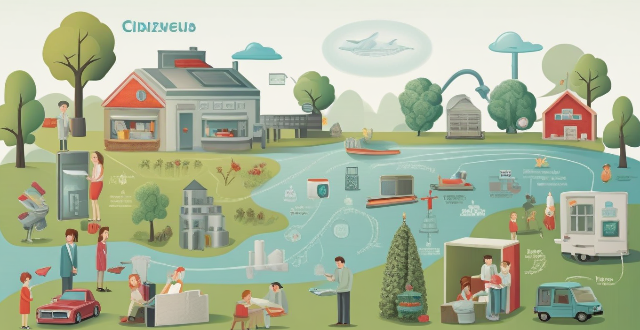The text provides a detailed guide on how citizens can actively participate in environmental monitoring initiatives. It suggests joining local conservation groups, volunteering for citizen science projects, utilizing technology, educating and spreading awareness, advocating for policy changes, and collaborating with universities and research institutions as effective ways to contribute. These activities not only aid scientific research but also promote community involvement and responsibility towards the environment.

How Can Citizens Participate in Environmental Monitoring Initiatives?
Environmental monitoring is a crucial activity that helps track changes in ecosystems, detect pollution sources, and assess the effectiveness of conservation measures. It's an ongoing process that requires significant resources and manpower. Here's how citizens can contribute to these initiatives:
1. Join Local Conservation Groups
- Participate in Cleanups: Join local clean-up drives organized by environmental groups. These activities not only help remove litter but also provide data on pollution levels.
- Attend Meetings: Most conservation groups hold regular meetings where they discuss current issues and plan future actions. Your participation can offer new insights and ideas.
2. Volunteer for Citizen Science Projects
- Bird Counts: Participate in annual bird counts like the Christmas Bird Count. The data you collect helps scientists understand bird population trends.
- Water Quality Testing: Many organizations provide training and equipment for volunteers to test local water bodies for pollutants.
- Phenology Observations: Record seasonal changes in plants and animals. This data helps study the impacts of climate change on local ecosystems.
3. Use Technology
- Apps and Online Platforms: Use apps like iNaturalist or eBird to record observations of plants, birds, and other wildlife. These platforms share your data with scientists worldwide.
- Wearable Devices: Some devices can measure air quality as you move around your city. Data from many users can create a detailed map of pollution levels.
4. Educate and Spread Awareness
- Social Media: Share your experiences and findings on social media platforms. Visual content like photos and videos can be particularly engaging.
- Community Workshops: Host or participate in workshops that teach others about environmental issues and monitoring techniques.
- School Programs: Collaborate with schools to introduce students to environmental monitoring through field trips, projects, or guest lectures.
5. Advocate for Policy Changes
- Local Government: Attend town hall meetings or write to local representatives about environmental concerns. Your data can support policy changes.
- Support Legislation: Support bills and regulations that promote environmental monitoring and conservation.
- Funding Initiatives: Advocate for increased funding for environmental monitoring projects at local, state, and national levels.
6. Collaborate with Universities and Research Institutions
- Research Projects: Offer your services as a volunteer for research projects that require fieldwork or data collection.
- Internships: Apply for internships at research institutions focused on environmental studies. This provides hands-on experience and valuable networking opportunities.
By participating in these ways, citizens can significantly contribute to environmental monitoring initiatives. Not only does this aid scientific research, but it also fosters a sense of community and responsibility towards our planet.